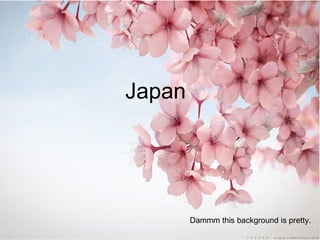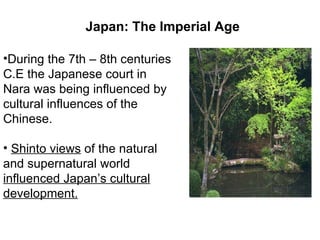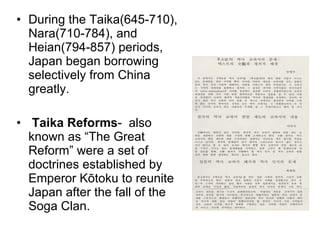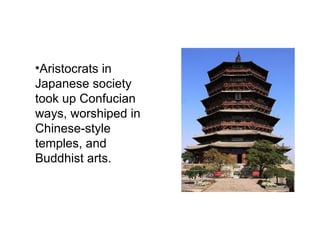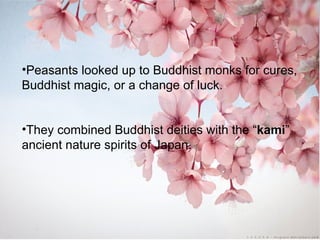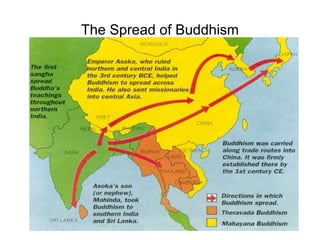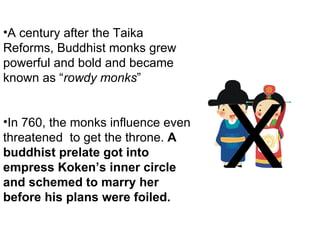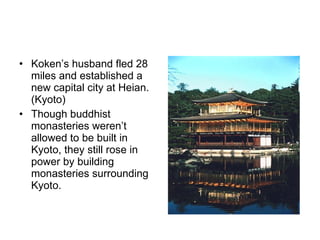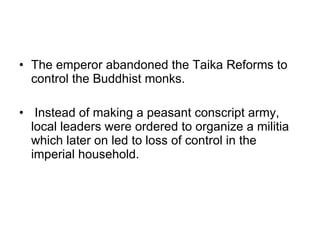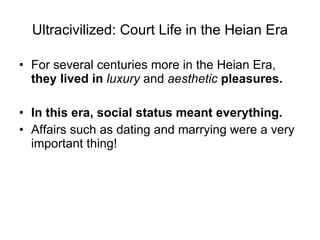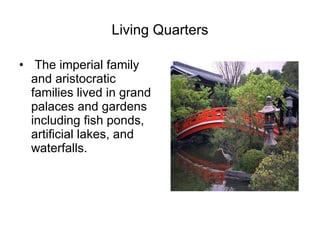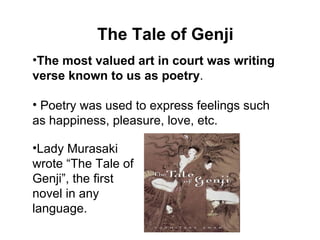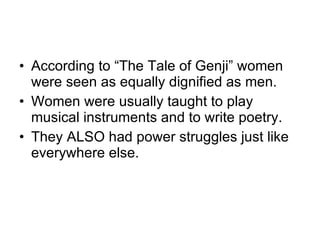Japan
- 1. Japan Dammm this background is pretty.
- 2. During the 7th – 8th centuries C.E the Japanese court in Nara was being influenced by cultural influences of the Chinese. Shinto views of the natural and supernatural world influenced Japan’s cultural development. Japan: The Imperial Age
- 3. During the Taika(645-710), Nara(710-784), and Heian(794-857) periods, Japan began borrowing selectively from China greatly. Taika Reforms - also known as “The Great Reform” were a set of doctrines established by Emperor Kōtoku to reunite Japan after the fall of the Soga Clan.
- 4. In 646, Taika Reforms were aimed at fixing administration along Chinese lines.
- 5. Aristocrats in Japanese society took up Confucian ways, worshiped in Chinese-style temples, and Buddhist arts.
- 6. Peasants looked up to Buddhist monks for cures, Buddhist magic, or a change of luck. They combined Buddhist deities with the “ kami ” ancient nature spirits of Japan.
- 7. The Spread of Buddhism
- 8. The Taika Reforms were meant to create a bureaucracy and peasant conscript army in Japan similar to the one in Han and Tang China. Attempts at these goals were disrupted by aristocratic families and Buddhist monastic orders.
- 9. A century after the Taika Reforms, Buddhist monks grew powerful and bold and became known as “ rowdy monks ” In 760, the monks influence even threatened to get the throne. A buddhist prelate got into empress Koken’s inner circle and schemed to marry her before his plans were foiled. X
- 10. Koken’s husband fled 28 miles and established a new capital city at Heian.(Kyoto) Though buddhist monasteries weren’t allowed to be built in Kyoto, they still rose in power by building monasteries surrounding Kyoto.
- 11. Koken’s husband fled 28 miles and established a new capital city at Heian.(Kyoto) Though buddhist monasteries weren’t allowed to be built in Kyoto, they still rose in power by building monasteries surrounding Kyoto.
- 12. The emperor abandoned the Taika Reforms to control the Buddhist monks. Instead of making a peasant conscript army, local leaders were ordered to organize a militia which later on led to loss of control in the imperial household.
- 13. Ultracivilized: Court Life in the Heian Era For several centuries more in the Heian Era, they lived in luxury and aesthetic pleasures. In this era, social status meant everything. Affairs such as dating and marrying were a very important thing!
- 14. Living Quarters The imperial family and aristocratic families lived in grand palaces and gardens including fish ponds, artificial lakes, and waterfalls.
- 15. The Tale of Genji The most valued art in court was writing verse known to us as poetry . Poetry was used to express feelings such as happiness, pleasure, love, etc. Lady Murasaki wrote “The Tale of Genji”, the first novel in any language.
- 16. According to “The Tale of Genji” women were seen as equally dignified as men. Women were usually taught to play musical instruments and to write poetry. They ALSO had power struggles just like everywhere else.
- 17. Ěý
- 18. Ěý

